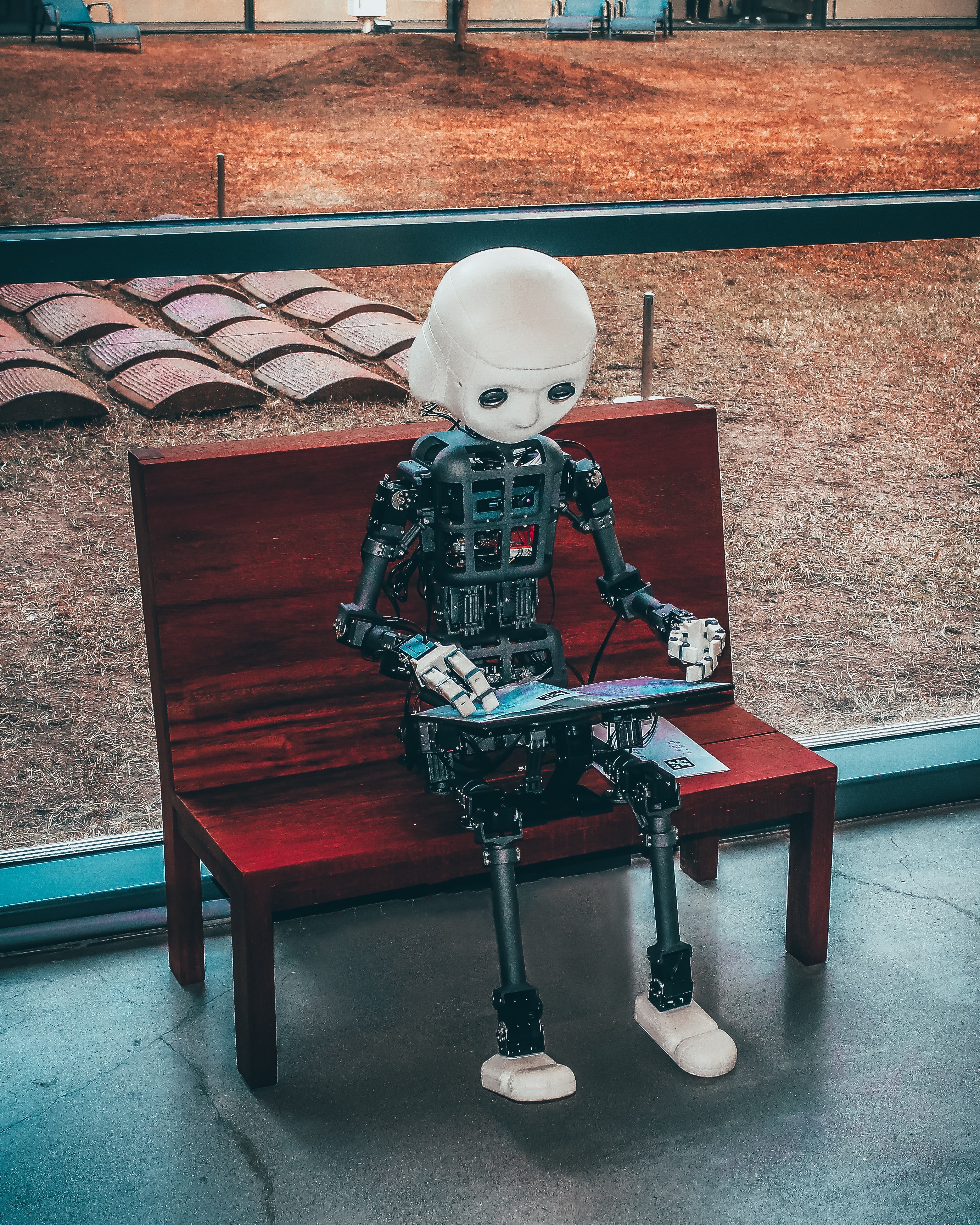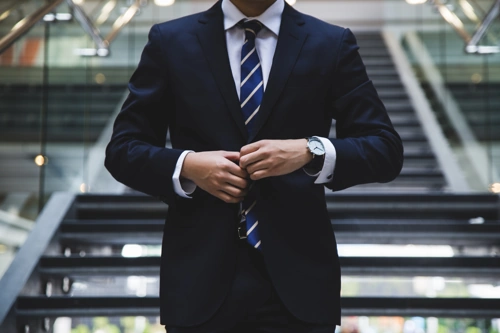Security Insights
Will AI Replace Your Cybersecurity Company? Your Cyber Security AI Guide
 By John Svazic
By John Svazic 
Did you know that since the advent of ChatGPT in 2022, cyber-attacks have increased by 135% from before?
For this reason and many others, AI is at the front of everyone’s mind. Will AI replace my job? Will AI make my life easier? All these questions and more will be answered in the coming years. In the realm of cybersecurity, we can confidently say AI also has a major role to play.
From what we know right now, it’s clear that AI will replace some of the more menial tasks that cybersecurity companies perform. However, the notion that AI technologies could completely replace cybersecurity professionals is questionable at best. In this article, EliteSec will answer the question of to what extent AI will replace cybersecurity professionals at their jobs.
How Cybersecurity and AI Interact With Each Other
From the earliest days of the internet, malicious actors have found ways to acquire information that they shouldn’t have access to. Of course, as hackers developed techniques to bypass cyber security services, individual IT experts and programmers formed their own defensive tactics as a response. This led to the creation of antivirus software, and of course, cybersecurity companies that assist firms in protecting their business from online threats.
Now that AI has developed to the extent that it has, both hackers and cyber security professionals have taken notice. To understand why that is, let’s go back to the basics.
AI stands for Artificial Intelligence, the more experience and information that you feed an AI, the more it learns. To accomplish this, advanced algorithms are trained on complex tasks that usually require human intelligence. This is the type of technology that powers voice command apps like Siri as well as self-driving cars, Netflix, and more.
Knowing that the cybersecurity industry must evolve and adapt at all times, it’s easy to see the relation to AI. The value proposition is clear to both sides. A hacker can train an AI to devise new tactics to bypass security controls. Meanwhile, a cyber security firm can use AI to detect threats before they’re even perceived by training a model to look for such hints.
How Close Is AI To Replacing Your Cybersecurity Company?
There is a growing perception in the cybersecurity industry that AI will replace humans. In fact, some people close to the industry project that by 2031, AI will replace humans completely.
So if you’re with us in 2023, that means that the AI transition should complete in about 8 years.
Of course, things hardly ever go as predicted. The 2031 projection, or any specific date for that matter, makes absolutely no sense to us. Any projection is a matter of speculation.
AI has indeed made significant strides in recent years. It can collect data, assess it, make decisions with an understanding of results, and learn from the outcomes. It has improved efficiency and data defence accuracy, helping individuals respond more quickly to threats, analyze larger datasets, and even anticipate potential attack vectors.
On the other hand, AI has its limitations. It may generate a large number of false positives, struggle with contextual awareness, and miss attacks it has not been programmed to recognize. AI can also be misused by attackers, increasing the complexity and sophistication of the threats we face.
The evolution of AI does not mean the end of cybersecurity companies. Rather, it represents a shift in how these companies operate. For our part, we are already integrating AI into our services, using it as a tool to augment our human expertise and enhance our capabilities.
What Your Cybersecurity Company Does For You Right Now
In reality, AI is only in its infancy. But in the coming decade, cybersecurity experts will be able to outsource a fair number of tasks to AI. The underlying theme here is that most tasks that cybersecurity experts currently perform will almost always require a sentient human being to orchestrate the entire process.
At EliteSec, we perform a wide variety of security roles for our clients. Here are some examples of the security services that our firm, and firms like ours, are known to provide:
-
Risk Assessment And Risk Management: We evaluate your current systems and conduct threat intelligence. Then, we outline the potential vulnerabilities and the risk they pose to your business. We then provide strategies to manage these risks effectively.
-
Penetration Testing:A penetration tester takes stock of all your cyber security infrastructure and attempts to gain administrative access to your system the same way a hacker would. This helps you identify your main security vulnerabilities.
-
Preventive Measures: Our teams work tirelessly to keep your systems up-to-date with the latest network security patches, install and maintain threat detection systems, and ensure that all your data is properly encrypted. We ensure that your defences are always ready to counter any potential threat.
-
Incident Response: An incident response strategy involves identifying the breach, containing the damage, eliminating the threat, recovering your systems, and learning from the incident to prevent future breaches. By planning with a cybersecurity firm ahead of time, you will be prepared with an effective incident response strategy.
-
User Training: Cybersecurity isn’t just about technology; it’s also about people that use your technology. We offer training programs to your employees, teaching them about safe digital practices, how to spot potential threats like phishing scams, and what to do if they suspect a security breach.
-
Constant Monitoring and Maintenance: We continuously monitor your systems for any unusual activity, which allows us to spot potential threats early and take necessary action. This includes both automated surveillance and human analysis.
-
Compliance Management: We help ensure that your business meets all industry regulations and compliance requirements related to cybersecurity and data protection. This is particularly pertinent in the health and financial fields where you carry sensitive user data.
-
Mobile App Security Testing:Some mobile apps have special security requirements they must meet before they can go to market. These concerns can be somewhat separate from the rest of cyber security.
The Anatomy Of A Cyber Attack
It should go without saying, but we will remind you that no two cyber attacks are ever the same. How could they be? A group of cyber attacks might adhere to the same overall pattern, but the information that’s at stake is always changing.
That said, to further enlighten you as to how cyber-attacks are typically orchestrated, here is an outline:
Reconnaissance
In the beginning, the attacker identifies the target and gathers as much information as possible about them. This can include details about the target’s systems, software, vulnerabilities, and employees. Each piece of information will help them execute their plot. It has become increasingly common for hackers to train an AI to detect these vulnerabilities independently.
Weaponization
After gathering enough information, the attacker constructs the malicious code or payload to use in the attack. This could be a virus, worm, Trojan horse, or other form of malware. Once again, AI can assist in creating this code. Even ChatGPT, which is known to have stringent limits, can be deployed to write malicious pieces of code if guided properly.
Delivery
The attacker then delivers the malicious payload to the target. This could be through various methods such as phishing emails, malicious websites, infected USB drives, or exploiting system vulnerabilities.
Exploitation & Installation
The attacker exploits a weakness in the system or network to execute the malicious payload. This could be a software vulnerability, a user clicking on a malicious link, or a user opening a malicious attachment.
Then, the malicious payload, once executed, installs itself on the target system or network. This could involve creating new processes, writing files, or modifying system settings.

Command and Control (C&C)
The malware then establishes a connection back to the attacker, allowing the attacker to remotely control the infected system or network. Through this C&C channel, the attacker can issue commands, exfiltrate data, or install additional payloads. AI could even be deployed in this phase to help speed up the process of extracting data.
Actions on Objectives
This is the stage where the attacker carries out their intended actions. This could involve stealing sensitive data, encrypting files for ransom, causing a system disruption, or simply remaining undetected for future attacks.
6 Different AI Threats That Cyber Security Companies Need To Manage In The Coming Years
In cybersecurity, keeping up with trends is the name of the game. Responsible cyber security companies are committed to maintaining their defensive posture by keeping abreast of the latest developments in AI. It’s clear that as AI technology continues to evolve, so too will the nature of the threats that cybersecurity companies face.
Generative AI Phishing Emails
The most direct and simple application of AI for hackers might not be the most obvious. While the mention of hackers typically conjures visions of someone in a dark room writing code on a computer, the reality is, many cyber attacks don’t require you to be anywhere near as clever. In fact, malicious actors can obtain useful data just from phishing emails.
Have you ever noticed those strange emails that start with “Hello Dear” and contain numerous grammatical emails? Those are usually phishing emails; the senders are trying to convince you to click on their malicious link, which will help them seize your data one way or another. Of course, most people, and email spam filters, have gotten good at detecting those phishing emails. The only issue is, with the introduction of (LLMs like ChatGPT)[https://elitesec.io/blog/chatgpt-cyber-danger/], it’s easier than ever for someone on the other side of the world to craft phishing emails that are tailored completely to the recipient, written in perfect English to boot. The lack of grammatical errors will make it easier for these emails to bypass your email’s internal spam filters. And of course, they can be written in a manner that would be much more persuasive than they could have previously.
Adversarial AI Attacks
On the flip side, attacks can also come from the hacker and exploit the AI cybersecurity or cloud security infrastructure that your firm uses.
An adversarial AI attack involves manipulating the input to an AI system to trick it into making mistakes. This could involve adding noise to an image to fool an image recognition system or subtly altering a piece of text to trick a natural language processing system. Basically, this would allow malicious activity to go unnoticed.
Data Poisoning Attacks
AI systems learn from data, which means that if an attacker can influence the data that an AI system is trained on, they can influence the AI system’s behaviour. Thus, you can see how easy it could be to construct a data poisoning attack. In this case, an attacker introduces malicious data into the training set, causing the AI system to learn incorrect patterns and make mistakes.
Model Theft and Inversion Attacks
AI models, particularly those trained on sensitive data, can be ripe targets for attackers. In a model theft attack, an attacker aims to create a copy of an AI model without access to the original training data, often by querying the model and observing its responses. In an inversion attack, the goal is to extract sensitive information from the model’s responses, effectively using the model to ‘invert’ the learning process.
Deepfakes And Social Engineering Attacks
In a social engineering attack, a hacker might attempt to gain access to your system by pretending to be someone in your organization with authority. To do so, they will need to provide proof that they’re the person they claim to be.
As such, the proliferation of AI Deepfake software allows you to imitate the voice and likeness of any individual you desire. And while this technology is still in its relative infancy, its fruits have become incredibly convincing in recent years. With time, it will only become more difficult to tell what’s fake and what’s real, creating a massive free-for-all for clever hackers.
AI-Enabled Malware
AI can be used to create malware that adapts and evolves to avoid detection and achieve its objectives. For example, an AI-enabled piece of malware might learn from each attempt to penetrate a system, gradually improving its ability to bypass security measures. Eventually, it could gain access to sensitive data with enough attempts.
The Scenario: How AI Could Replace Your Cybersecurity Company
In the not-too-distant future, it’s possible that a company could invent a machine learning platform that manages to predict and prevent cyber threats, and intrusion detection systems to monitor and respond to anomalies. Deep learning algorithms could be used to identify patterns and correlations that draw out hackers from vast pools of data.
On the other hand, this could easily be a facade. Cybercriminals would eventually wise up to the machine-learning algorithms. As such, they could identify the patterns that the machine-learning algorithm can detect, and learn how to exploit them. They could even disguise their real threats as completely innocuous. At that point, you would be right back to square one. Every firm that becomes the victim of such an attack will make a beeline to the nearest cybersecurity consultant to get their creative advice on how to stop this new threat.
7 Things AI Will Never Replace
At the end of the day, cyber security experts know that AI simply cannot replace everything, Here are 7 key roles ortraits of cybersecurity consultants.
-
Strategic Decision Making: While AI can analyze data and identify patterns, the ability to make strategic decisions based on that data is a uniquely human skill. Cybersecurity often involves decisions with broad implications, requiring a nuanced understanding of business operations, legal considerations, and ethical issues. We’re a long way away from an AI that can accurately take all those elements into account.
-
Contextual Understanding: AI struggles with understanding the broader context of its environment. Cybersecurity often requires a deep understanding of the specific business context, including the nature of the organization’s work, the type of data it handles, and the potential motivations of attackers. You will need a human to interpret the significance of potential threats and their impacts on the organization.
-
Creative Problem-Solving: AI excels at tasks that can be defined by clear rules and procedures. However, it falls short when it comes to the creative problem-solving that is often required in cybersecurity. Cyber threats are constantly evolving, and effective defence often requires ingenuity and anticipating what attackers might do next.
-
Ethics and Legal Understanding: Cybersecurity often involves ethical and legal considerations. For example, decisions related to data privacy, user rights, and law enforcement often require a nuanced understanding of law and ethics. While AI is set to disrupt the legal industry, actually applying the law is a separate issue.
-
Human-Centric Design and Training: Ensuring that cybersecurity tools and practices are easy for humans to use is crucial for their effectiveness. AI does not yet understand UI, and making user-friendly security processes is critical to getting your entire team on board. After all, many threats will pass through them if your security infrastructure is misused.
-
Dealing with Unpredictable Scenarios: AI struggles with handling new and unpredictable situations that it has not been specifically trained to handle. In the dynamic and evolving world of cybersecurity, new threats and situations are always arising. Humans are better equipped to adapt and respond to these novel situations.
-
Instincts and Intuition: Human intuition and instinct, based on years of first-hand experience, are invaluable in cybersecurity. While AI can analyze patterns and trends, it doesn’t possess gut instinct or intuition. Sometimes, it’s this instinct that can be the difference between detecting a threat or letting it pass unnoticed.
Is It Really Possible For AI To Replace Cybersecurity Firms?
We’ve weighed the pros and cons of using AI for your cybersecurity posture. We’ve identified the potential threats that AI can pose to your current defences. At the end of the day, it seems like there simply isn’t any way to effectively respond to security threats without any level of human involvement.
It isn’t all bad, but AI still has a long way to go before it can completely replace the role of a cybersecurity firm.

Choose A Resilient Cybersecurity Company Like EliteSec
You must choose a firm that provides effective cyber security solutions, EliteSec provides the gold standard in the realm of cybersecurity.
At EliteSec, we know that the value of a cybersecurity firm lies not in mere technology, but in the experience, professionalism, and personalized understanding of each client’s unique needs. Our decade-plus of experience in the industry, combined with our dedication to providing tailored solutions to each client, positions us at the forefront of the cybersecurity world.
Our commitment extends beyond selling services. We believe in partnering with organizations, working in conjunction with your team to ensure a robust cybersecurity posture that suits your unique operational needs. It is this commitment, rooted in fairness and honesty that sets us apart.
The reality is, securing your digital assets is identical to securing your future. Without a sophisticated means of protecting your company, you run the risk of getting attacked. And in that case, you could incur significant damage, not only to your profits but your reputation, making it unlikely that people will want to continue doing business with you. We can cover everything from security awareness training to endpoint security.
Therefore, you should contact EliteSec when you’re ready. You will receive a free 30-minute consultation where we can help you assess your current cybersecurity situation and prescribe a course of action for the future.
Schedule A Consultation
We’re happy to offer you a free 30-minute consultation where we’ll run through these pressing issues over video chat. Check out our availability to book an appointment.

